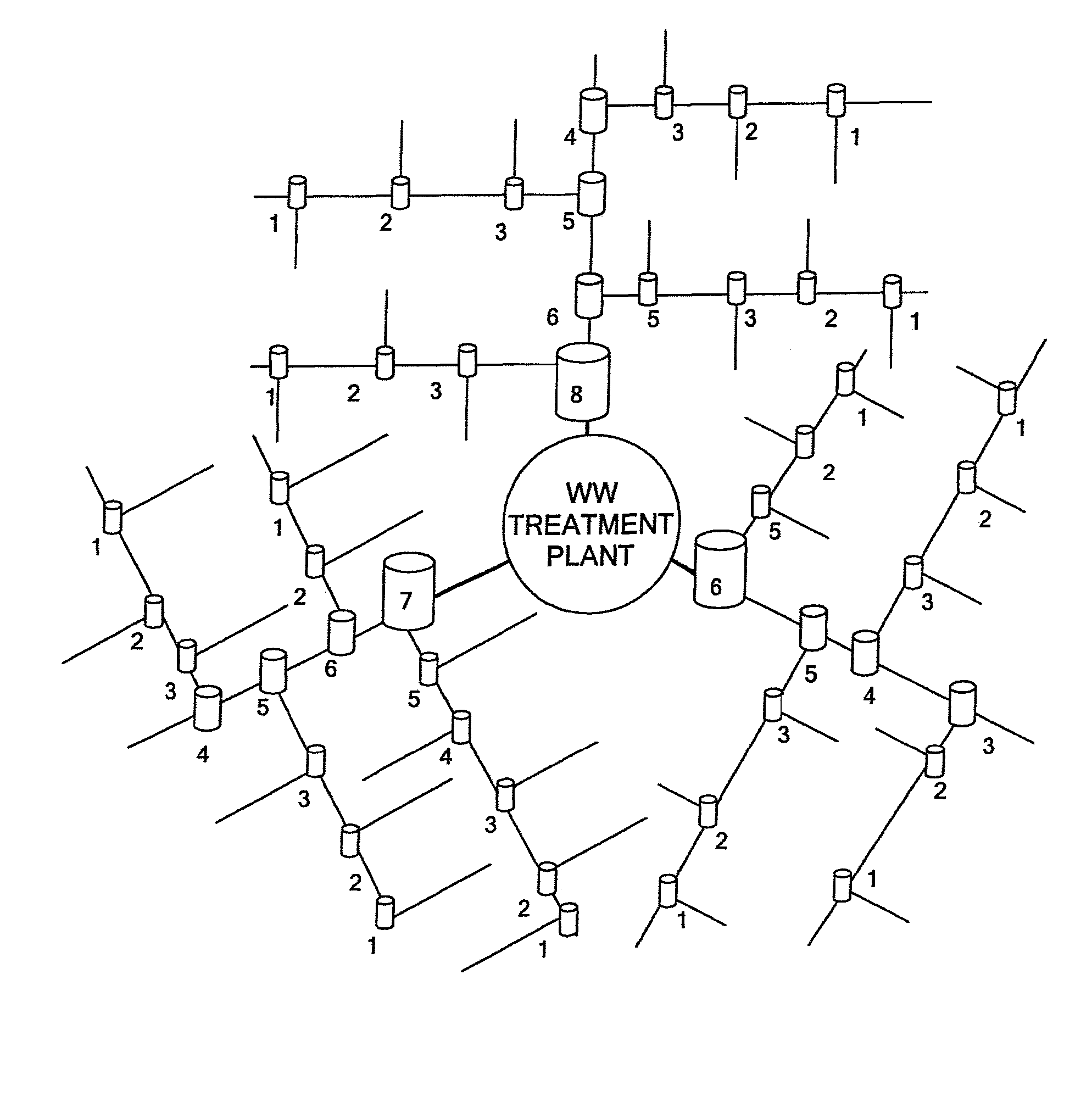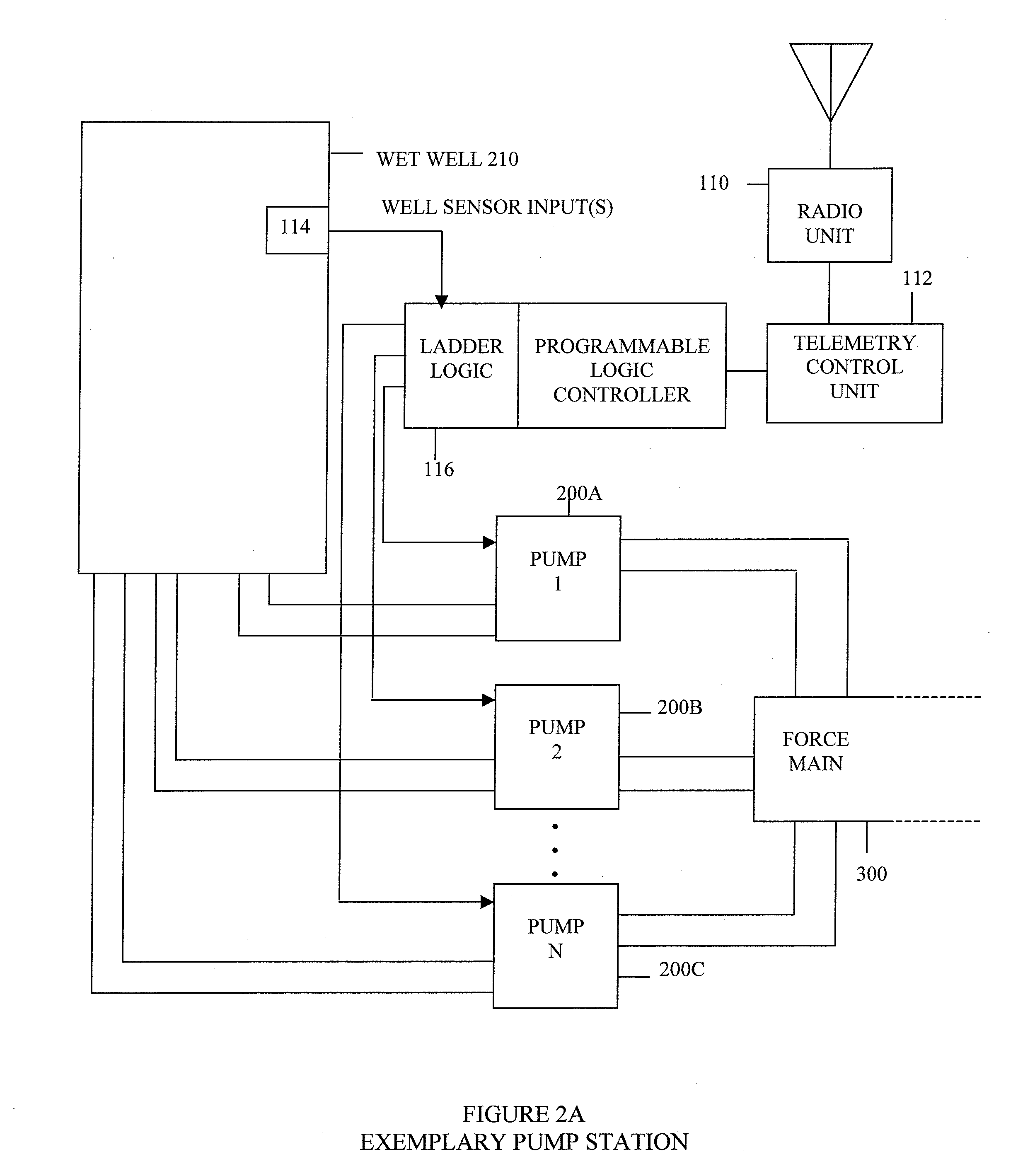Wastewater collection flow management system and techniques
a wastewater collection and flow management technology, applied in the field of wastewater collection systems, can solve the problems of increasing the energy cost and wear and tear of costly equipment, requiring the use of expensive special-purpose trucks, and affecting the operation efficiency of biological treatment processes utilized in the treatment plant, so as to reduce the maintenance requirement and increase the threshold level of activation
- Summary
- Abstract
- Description
- Claims
- Application Information
AI Technical Summary
Benefits of technology
Problems solved by technology
Method used
Image
Examples
Embodiment Construction
[0051]FIG. 1 is a block diagram illustrating how a plurality of pump stations communicate with a central server in a wastewater treatment system in accordance with one aspect of the invention. A central station 100 includes a base station 101, preferably including an XGMI Cognitive Radio for communicating with remotely located pump stations. Commands are sent to the pump stations over the base station radio and are generated by a server process running, preferably, on a DFS hyper SCADA server 102. The server is controlled by system control software 103 described more hereinafter
[0052]A plurality of stations 110-A through 110-N communicate with the central base station using, preferably, radio links. Almost any type of communication link is possible when designing a system to utilize the benefits of the disclosed invention. These can include microwave, optical (e.g. laser), wireline, optical fiber, microwave communication links and the like. Preferably, however, radio communication l...
PUM
 Login to View More
Login to View More Abstract
Description
Claims
Application Information
 Login to View More
Login to View More - R&D
- Intellectual Property
- Life Sciences
- Materials
- Tech Scout
- Unparalleled Data Quality
- Higher Quality Content
- 60% Fewer Hallucinations
Browse by: Latest US Patents, China's latest patents, Technical Efficacy Thesaurus, Application Domain, Technology Topic, Popular Technical Reports.
© 2025 PatSnap. All rights reserved.Legal|Privacy policy|Modern Slavery Act Transparency Statement|Sitemap|About US| Contact US: help@patsnap.com



